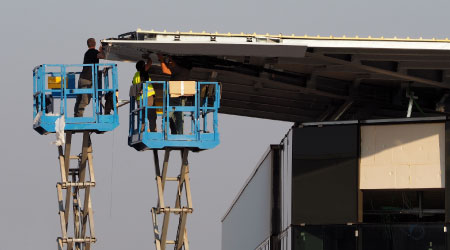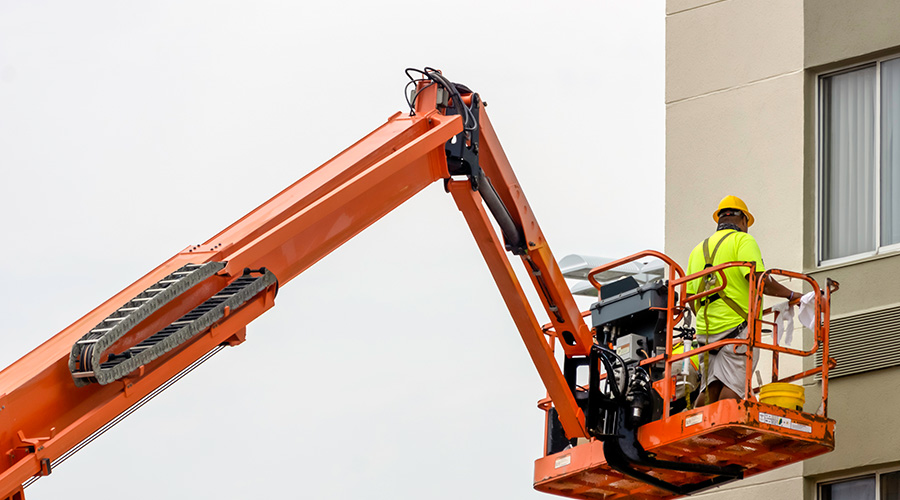Key Questions Can Lead Managers to Smart Decision on Lifts
The main capabilities to focus on when specifying aerial work platforms and lifts are access and mobility.
Managers can think of access as reaching to a point somewhere at the top of a cube in space. The point might be: directly overhead; overhead and forward; overhead, out and down; or rotated to the right or left. But it usually is a combination of these directions. The combination of access points determines the required type of elevating mechanism — a scissors for straight up, a boom to reach up and out, and an articulated boom to reach up, out, over and down. The type of required carriage is a function of the surface on which technicians are working, whether that is a hard, level indoor surface or a rough, uneven outdoor surface.
Managers also need to consider mobility. Do users need a self-propelled lift to move around frequently in the workplace? Or does the task call for a truck- or trailer-mounted unit to enable them to move rapidly from one location to another over the road, with a quick extension and retraction of the mast at the job site?
Also, should the power source be electricity, gas, diesel fuel, or propane? What accessories does the task require? Many accessory options are available, including: electric and pneumatic power; platform extendability; welding hookups; lamp storage; and easy-access tool holders.
Focus On Versatility
Because of the endless variety of maintenance tasks, versatility is king when selecting aerial work platforms and lifts. Managers want the greatest capability for the dollar.
For example, suppose a work site's requirements include the following: a load capacity up 10,000 pounds; a lifting height of 56 feet; a reach of 42 feet; straight forks; rotating forks for setting loads on uneven ground; a coil handler; a scoop bucket; a grapple-clamp bucket; a garbage bucket; a crane hook; spreader bars for multiple hookups on long material such as beams; a concrete-block cube lift; a work platform; an extendable work platform with guardrails; a boom-extension truss to add 6 feet of reach capacity; and a pallet lift.
Today, lifts are so versatile that one telehandler with accessories will handle all of these requirements.
Boom lifts offer the same versatility. One boom lift can reach a work height of 45 feet and features a 7½- by 22-foot platform with 4,000 pounds of capacity to accommodate a workbench and enough material so workers have to make fewer trips to the ground.
It also can reach a 55-foot-long workspace without relocating on the ground, and the platform rotates 180 degrees without moving the boom. Sliding tracks for fall-protection harnesses allow workers to move anywhere on the platform without unhooking and rehooking. It also has onboard diagnostics, along with crab steering for precise maneuvering.
Scissor lifts are more limited to jobs requiring straight vertical lifts, but many now have guarded platform extensions to add more horizontal reach and offer a smaller footprint. They are maneuverable in close places and can navigate through personnel doors.
Related Topics:














